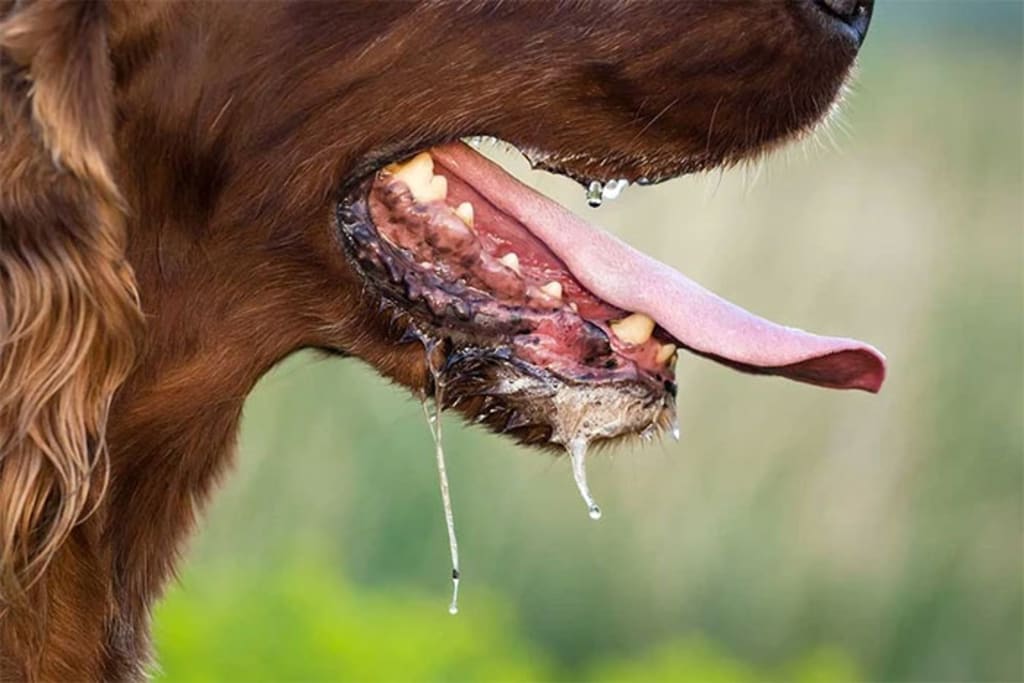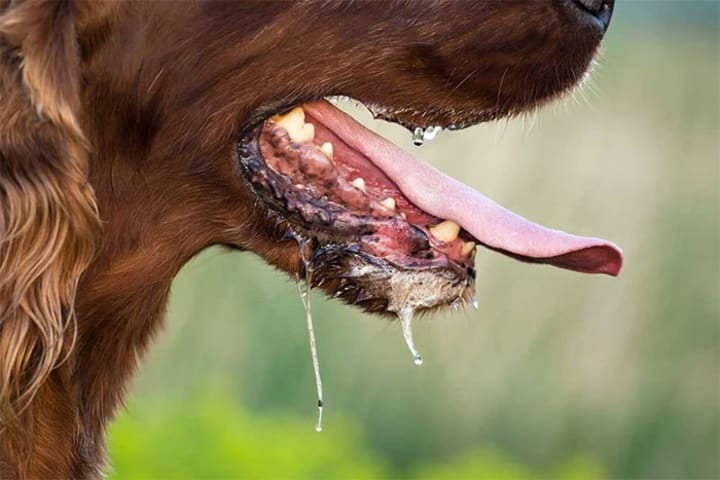Signs of a rabid dog - Frequently asked questions about rabies
How long does it take for rabies to develop after being bitten by a dog or cat, how does the rabies virus develop in the body... are common questions. According to the Centers for Disease Control and Prevention (CDC), approximately 59,000 people worldwide die from rabies each year. About 99% of them are bitten by rabid dogs.

According to Healthline, rabies is caused by a virus that affects the central nervous system and spinal cord, specifically the brain, of dogs.
Initially, the viruses reside in muscle tissue and move to the nervous system, eventually entering the salivary glands. This is why most images of rabies show dogs drooling or foaming at the mouth.

How is rabies spread?
Dogs are the most common carrier of rabies. Dogs, cats or other mammals can transmit the virus to humans through bites or scratches.
According to the CDC, the incubation period until clinical symptoms appear can vary from 1 day to 1 year or more. In dogs, the incubation period is usually from 2 weeks to 4 months depending on factors such as the location of the virus and the amount of virus.
Symptoms of rabies in dogs
After being bitten by a rabid animal, the disease will progress in stages. There are 3 stages of rabies symptoms in dogs, but some symptoms will not be obvious.
Early stage:
Normally docile dogs can become agitated and aggressive. Sometimes hyperactive dogs can become more timid and fearful.
The area where the bite wound is itchy causes the dog to lick or bite or scratch itself, causing hair loss and bleeding.
Severe stage:
At this point, the virus has reached the dog’s brain and is likely to affect their spinal cord. This is when dogs go through a debilitating stage with symptoms such as:
Dogs become aggressive, easily agitated, and bark fiercely at strangers
Pounces when the owner calls, just hearing the slightest noise will jump up and bark in long bursts.
Dogs show signs of loss of appetite, eating and chewing rocks, dirt and trash (pica).
Pupils dilated, eyes bloodshot.
Drooling a lot, foaming at the mouth, appearing restless, always alert, fearful or aggressive.
Attacks other dogs and people.
Paralysis stage
This condition can start out as partial paralysis or progress over several days to complete paralysis, coma, and death.
Continuous drooling or foaming at the mouth
The dog is often unable to close his mouth, his jaw drooping completely
The dog's body begins to tremble and affects its ability to walk.
Dogs can also skip the second stage and enter the final stage soon after the first rabies symptoms appear.
After the first signs of rabies in dogs appear, the animal will move through the active phase of the virus within about 7 days, as each phase can last about 2-3 days.
Rabies prevention
The most effective way to prevent rabies in dogs is to vaccinate yourself and your pet. Puppies should get their first vaccination between 12 and 16 weeks of age.
Vaccination of both animals and humans has helped dramatically reduce the number of rabies cases in the United States. The country has two to three deaths from rabies each year
Stay away from stray dogs and wild animals (raccoons, foxes, bats), as they are at highest risk of carrying rabies.
How does rabies develop in the human body?
After entering the human body, the rabies virus develops from the innermost layer of subcutaneous tissue, or from the muscles, into the peripheral nerves, that is, the nerves in the human body that are outside the brain or spinal cord.
The virus travels along nerves to the spinal cord and brain at an estimated rate of 12-24 mm per day.
Infected people have behavioral changes and clinical manifestations as the virus begins to penetrate the brain. The incubation period can range from a few days to a few months, and can be as long as a year or several years.

The incubation period can range from a few days to several months.
What factors influence the development of rabies?
Factors that may influence the development of rabies infection include:
Type of exposure.
Severity of the bite.
The amount of rabies virus that enters the body.
Type of animal bite.
Patient's immune status.
Bite areas, head and neck injuries, as well as injuries to nerve ending areas such as fingers, generally have a shorter incubation period due to the closer distance for the virus to enter nerve tissue.
How to treat bites?
A person bitten by an animal should do the following:
Wash the wound with soap and running water for about 10-15 minutes. If soap is not available, wash the wound with clean water and running water for 15 minutes. This is the most effective first aid method against rabies.
The wound should be thoroughly cleaned with 70% alcohol or iodine alcohol.
Immediately take the patient to a medical facility for treatment as soon as possible.
What not to do about animal bites
Apply irritants to the wound such as paprika, juice or sap, acids or alkalis.
Bandage and apply medicine to cover the wound.
How long does it take for rabies to develop and how long can an infected animal live?
The incubation period can last from a few days to several months, while the time from illness to death ranges from one to 7 days.
Just monitor the animal that caused the bite for 10 days without treatment?
In countries where rabies is prevalent in dogs and cats, it is mandatory to treat and monitor the animal for 10 days.
If the animal remains healthy during the observation period, post-exposure prophylaxis (PEP) can be changed to pre-exposure prophylaxis for the bitten person. That means vaccination will prevent that person from getting rabies if bitten in the future.
About the Creator
Ken aquariums
Telling stories my heart needs to tell <3 life is a journey, not a competition
If you like what you read, feel free to leave a tip,I would love some feedback
https://sites.google.com/view/hk-decor/trang-ch%E1%BB%A7
Enjoyed the story? Support the Creator.
Subscribe for free to receive all their stories in your feed. You could also pledge your support or give them a one-off tip, letting them know you appreciate their work.






Comments
There are no comments for this story
Be the first to respond and start the conversation.